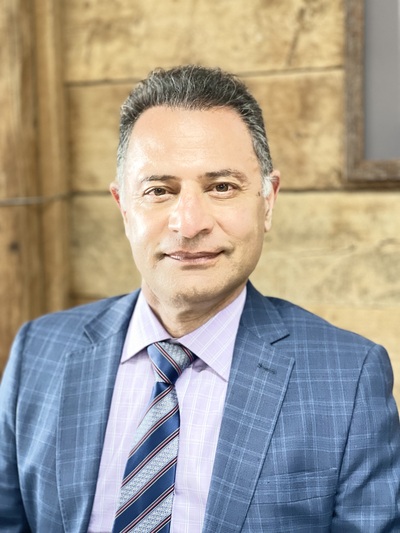Benefits of modern hybrid multicloud platforms in health care

Health care’s mission is deceptively simple: treat those in need, heal the sick, support the unwell. Delivering on that mission, however, can be one of the most technologically complex challenges — particularly when it comes to modernising for the AI age.
In Australia, health care and social assistance is the largest employing industry. Over 16% of the total workforce have their main job in this industry and it’s only growing. In the last year alone, the number of workers grew by 115,200.
From physiotherapists, surgeons, doctors and nurses, through to administration and IT staff, these workers are critical to its day-to-day operations.
The hospitals and healthcare centres of today look very different than they did just a few years ago — clipboards and pens are giving way to tablets and remote monitoring devices.
These machines will, on occasion, need major maintenance or transformational upgrades to the underlying infrastructure. But unlike other industries, where downtime could be acceptable during weekends or even overnight, hospitals must ensure business continuity to provide medical care 24/7 — especially in the ED. You can’t just ‘turn off’ a hospital for a few hours to upgrade it.
To make matters more complicated, hospital information systems are a web of services connecting each department. From patient registration to scheduling systems, laboratory and pathology results (to name a few), multiple disparate applications need to ‘talk’ to each other.
Many of these applications — and the infrastructure they run on — were deployed when fax machines and pagers were cutting-edge technology. That means any significant transformation project is a herculean task, particularly when modernising for the AI age.
The potential benefits of AI are hard to ignore. From improving diagnostic accuracy to automating administrative tasks and personalised treatment plans, it could lead to better patient outcomes, reduced costs and increased accessibility to care.
This could undoubtedly ease pressure on resource- and time-poor healthcare workers, helping to reduce the time spent on administrative tasks that take them away from patient care.
With so much to gain, experiments in AI are already underway.
AI applications are modern applications — they require scalable, secure infrastructure that lets you run any app, anywhere, at any scale. Unfortunately, for many hospitals, the underlying infrastructure can’t hope to support this new technology.
For other industries, outsourcing infrastructure to public cloud providers has been a feasible and popular shortcut to running modern applications. Hospitals, given the criticality of their mission and the life-and-death nature of their applications, must chart a different course.
Reliable, modern and secure infrastructure should be the top priority, but rather than being run by the hyperscalers, it is better run by the hospitals themselves.
Modern hybrid multicloud platforms enable critical industries like health care to reap all the modern application benefits of public cloud, but with the control of keeping it under their own roof. This hybrid multicloud must allow support for both traditional virtual machines and containers, where most AI-based and modern applications run. The ability to manage both these workloads via a single platform is critical to achieving the highest level of flexibility and control at the lowest costs, while also allowing healthcare IT teams to deploy infrastructure as demanded on-prem, in the cloud or at the edge.
A bi-benefit of such a platform is the ability to lift and shift legacy applications without any need for refactoring to the public cloud. This unlocks many of the benefits of modern infrastructure and paves a path for sustainable and easy modernisation. Let’s call this a simple and speedy migration path to the cloud.
Critically, these migrations can occur while the current system is running. This means the critical day-to-day operations can continue while the digital transformation takes place in the background.
Once these platforms are up and running, they require far less manual intervention and maintenance. This gives precious time back in the day for skilled IT staff to focus on projects that deliver great value, such as AI applications or cybersecurity, rather than ‘keeping the lights on’ in the server room.
As AI looms over every business discussion, a key benefit of modern hybrid multicloud platforms is they are designed to run the containerised, modern applications upon which AI is built. Beyond the immediate operational benefits, these platforms set the stage for the future of AI-driven health care.
Healthcare’s promise is simple. Delivering it can be complex — but it doesn’t have to be.

In Conversation with Australian Institute of Digital Health CEO, Anja Nikolic
Hospital + Healthcare speaks with Australian Institute of Digital Health CEO Anja...
Cutting-edge digital health tools putting plastic, silicon and steel to the sword
The Australian Digital Health Agency's Chief Digital Officer sets out some sustainable...
How are AI models approved for use in health care?
Hospital + Healthcare speaks with the Therapeutic Goods Administration to...



![[New Zealand] Transform from Security Awareness to a Security Culture: A Vital Shift for SMB Healthcare — Webinar](https://d1v1e13ebw3o15.cloudfront.net/data/89856/wfmedia_thumb/..jpg)
![[Australia] Transform from Security Awareness to a Security Culture: A Vital Shift for SMB Healthcare — Webinar](https://d1v1e13ebw3o15.cloudfront.net/data/89855/wfmedia_thumb/..jpg)




